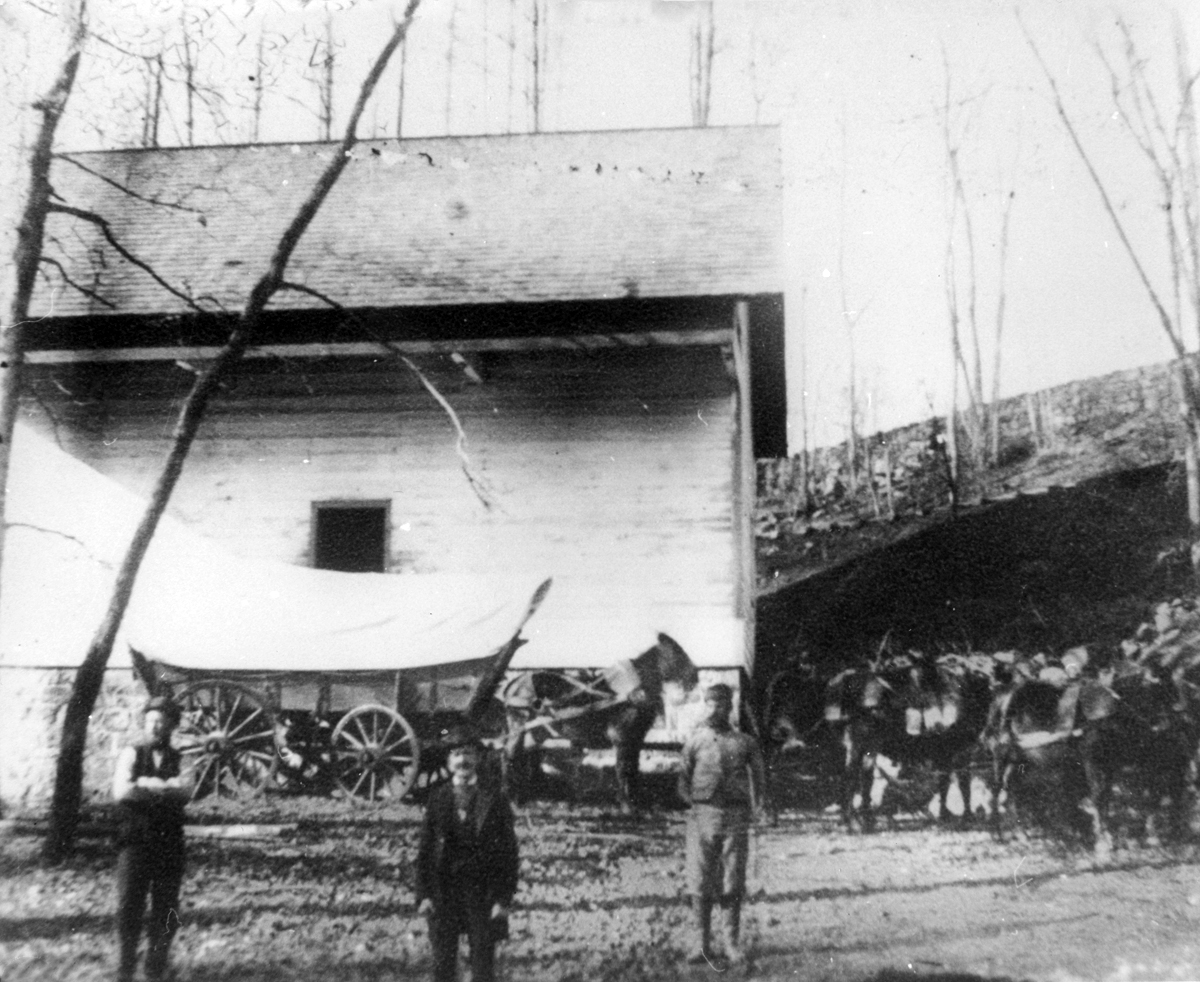Regulations
One of the most frustrating difficulties of doing business for the DuPont Company was getting gunpowder into the hands of its customers. Shippers did not want to handle goods that could potentially kill them, and gunpowder's inherent dangers prompted many municipalities to enact strict regulations for its handling and storage.

Gunpowder magazine in Lower Hagley Yard, ca. 1890. Magazines such as this one were used to store gunpowder before shipment, Hagley Digital Archive.
Philadelphia, for example, required all incoming gunpowder shipments to be checked in and stored at a city-operated magazine on the Schuylkill River. Powder owners were allowed to take out only a small amount at one time. Violators of the rules often faced punishments such as heavy fines and loss of their business licenses.
DuPont initially tried to circumvent these regulations by secretly transporting powder to merchants via wagon. DuPont would also label boxes that went on ships as other goods, such as books or glass. By the 1820s, DuPont abandoned this practice due to the risk of detection or an accidental explosion. Following the rules also, in DuPont's estimation, helped build goodwill with local authorities.
The Fear of Gunpowder
Even when the companies like DuPont obeyed all regulations, people remained apprehensive about the presence of explosives in their communities. Warehouse owners in port cities were often reluctant to let the Company store gunpowder in their buildings until it could be shipped out.
This caused quite a problem for DuPont. Without storage facilities, the company had to make sure that powder wagons and transport vessels arrived at docks at the same time so that the gunpowder could be immediately loaded. Any delay on the prt of either teamsters or ship captains meant that DuPont had to haul their powder back to the factory and wait for another ship.
Photo Gallery
Unfortunately, few if any images exist to show the actual devastation that occurred in Wilmington on May 31, 1854. However, gunpowder explosions were not uncommon during the 19th century, and many photographs showing the damage caused by later accidental explosions do exist.
The images and articles displayed in the photo gallery below are intended to illustrate the extent of destruction that gunpowder explosions can cause and how this damage affects more than just powder yard workers.







